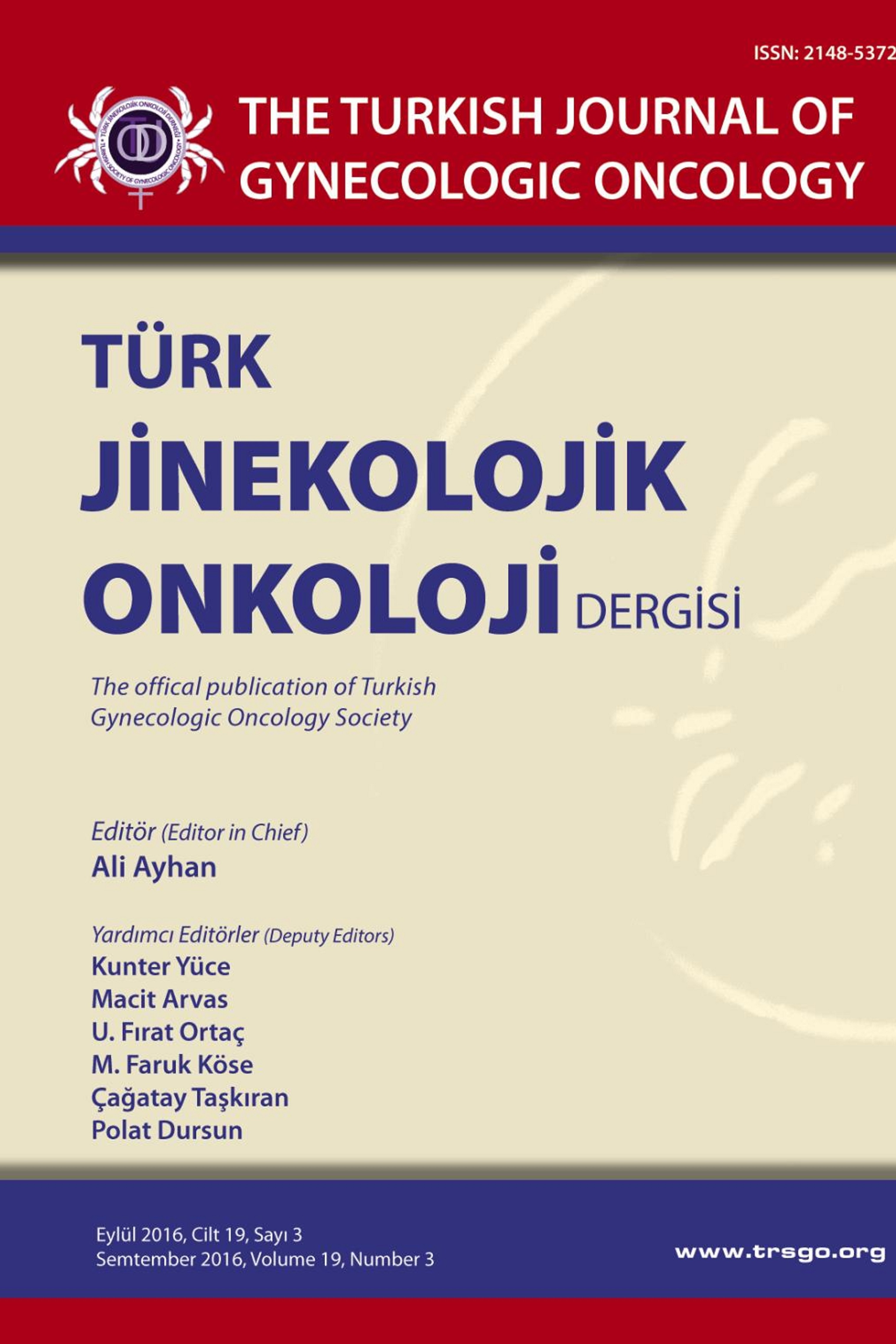OVER KANSERİNİ TAKLİT EDEN KRONİK EKTOPİK GEBELİK OLGUSU
Giriş: Kronik ektopik gebelik ektopik gebeliğin ender görülen bir komplikasyonudur. Düşük veya negative beta HCG seviyeleri, fallop tüpünde dejeneretrofoblastik doku ve kronik inflamasyonla karakterizedir. Kronik ektopik gebelik fallopian gebeliğin bir türüdür ve dejenere trofoblastik dokuya cevaben gelişen inflamasyon sonucu pelvik kitle oluşumuna yol açar. Klinik bulgular çoğu zaman kafa karıştırıcıdır ve labarotuar sonuçları yanıltıcıdır. Sunduğumuz hasta klinik,radyolojik ve labarotuar bulguları sebebiyle başta over kanseri olarak değerlendirilmiştir.Amacımız konik ektopik gebeliğin pelvic kitlenin ayırıcı tanısında değerlendiilmesi gerektiğini hatırlatmaktır. Olgu Sunumu: 28 yaşında (G10/P8) olan bir hasta aralıklı kasık ağrısı şikayeti ile jinekoloji polikliniğine başvurdu. Yapılan ultrasonografik inceleme sonucunda sağ adneksial alanda 8 cm çaplı heterojen kitle saptandı. Kitlenin köken aldığı yer net olarak belirlenememekteydi. Abdominal bilgisayarlı tomografi sonucunda sağ adnekste solid komponentler içeren, heterojen kontrast tutulumu olan 8x10 cm çaplı kitle saptandı. Beta-hCG ve CA125 seviyeleri sırasıyla 8 ve 10 IU/ml olarak saptandı. Kitle laparatomi ile çıkartıldıktan sonra yapılan frozen inceleme benign olarak geldi. Kesin patoloji sonucu ise destrükte olmuş tuba içinde tubal ektopik gebelik ve kronik inflamasyon olarak geldi. Tartışma: Kronik ektopik gebelik, beta-Hcg negatif olduğu, klinik tablonun uyumlu olmadığı durumlarda da adneksial kitlelerin ayırıcı tanısında göz önünde bulundurulması gereken bir durumdur.
Objective: Chronic ectopic pregnancy is a rare form of ectopic gestation which is characterized by low or negative quantitative serum pregnancy test, degenerated trophoblastic tissue and chronic inflammatory mass formation in the fallopian tube. It is a form of tubal pregnancy which incites inflammatory response attributed to degenerated trophoblastic tissue and often leading to the formation of a pelvic mass. Its clinical features are often confusing, and laboratory evaluations are misleading. The case presented here was misinterpreted initially as ovarian malignancy because of clinical, radiological and laboratory findings and aims to remind of chronic ectopic pregnancy in differential diagnosis of pelvic masses. Case Report: A 28 year-old woman G10P8A2 admitted to the gynecology clinic due to intermittent pelvic pain. Ultrasonography revealed a 8 cm heterogenous mass in the right adnexa. The origin of the mass could not be identified with ultrasound imaging. Abdominal computed tomography showed a 10x8 cm sized solid-cystic mass with heterogenous contrast involvement in the right adnexa. Beta-human chorionic gonadotropin (hCG) and CA 125 levels were respectively 8 (0-10) IU/ml and 167 (0-35) U/ml. The mass was excised in exploratory laparotomy, frozen investigation showed benign features. Final pathology report revealed tubal ectopic pregnancy which destructed tubal wall with chronic inflammation and immature chorionic villi with conception products consistent with ectopic pregnancy. Conclusion: Chronic ectopic pregnancy is one of the conditions that have to be considered in the differential diagnosis of adnexial masses even if beta-hCG tests are negative and clinical symptoms are disguised.
